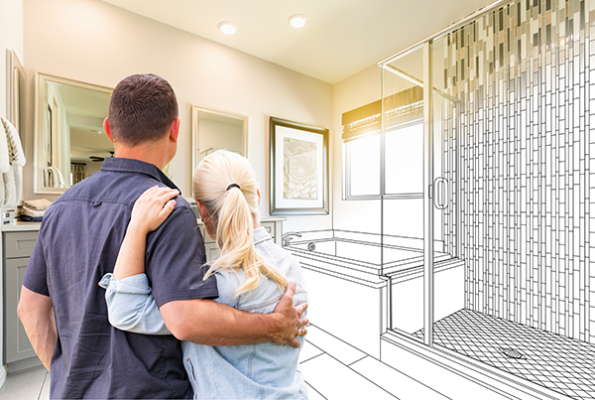Search results for "values at"
25 Results
Page: Livable Housing Designs
Championing safer, more comfortable and easier to access homes for everybody, everyday, at all stages of life.
Page: The Beechwood Process
We help to guide you through the different stages of the building process, acting as your building partner the whole way through.
Page: Investor
If you build the right property, it ensures that it would always be rented and that you get the rental yield that you’re after.
Page: Knock Down Rebuild
If you love your location, but not your house, consider a knock down rebuild. A knock down rebuild with Beechwood is easier than you think.
Page: First Home Buyer
Becoming a first home buyer is an exciting experience, but it is a bit daunting as well. There is a lot to comprehend – blocks of land, floorplans, finance, solicitors, Government grants, etc. At Beechwood, we have been helping first home buyers for almost 40 years.
Page: Choosing Land
All you need to know about choosing the right piece of land for your new family home.
Page: Our Vision, Mission and Values
At Beechwood, our core values are based on the four 'R's. These are not just buzz words. They reflect who we are and how we conduct ourselves.
Page: Major Partners
At Beechwood, our major partners are mix of Australia's biggest and premier brands. Our long standing relationship with these partners allows us to provide better quality products as standard in our homes.
News: The Heart Of A Home: Designing A Kitchen That Works For You
The kitchen, often called the heart of a home, has evolved from a mere cooking space to a vibrant area for family gatherings and entertainment. Its design reflects personal style and caters to unique family needs.
In designing your kitchen, it's crucial to consider how the space will be used, focusing on aspects like functionality and aesthetics. Whether it's hosting dinner parties, preparing daily meals, or enjoying quiet coffee moments, your kitchen should align with your lifestyle.
Here are some considerations to keep in mind when designing a kitchen that works for you:1. Layout Options
When designing your kitchen, the layout is a key element. Let's explore some popular options to help you customise your home:
• L-Shaped Layout: Ideal for small to medium kitchens, this layout offers efficient use of space. It fits neatly into corners, providing ample counter space and easy movement.
• U-Shaped Layout: Perfect for larger kitchens, it surrounds the cook with countertops and appliances. This layout offers plenty of storage and workspace, making it great for those who love cooking.
• Island Layout: This layout adds a versatile central unit to your kitchen and is ideal for homes with open-plan designs. It provides extra counter space, storage, and sometimes seating. It's great for social cooking and casual dining.
• Galley Layout: This layout features two parallel counters, suitable for narrow spaces. Besides efficiency, it also offers ample storage and counter space but may lack room for dining.
When choosing a kitchen layout, there's no one-size-fits-all solution. Each option has its advantages. That said, it is essential to assess them carefully, taking into account your available space and specific needs.
2. Storage Solutions
Maximising kitchen storage is essential for functionality and organisation. Here are some innovative ideas:
• Vertical Storage: Use wall space for hanging pots, pans, or utensils. You can also have vertical dividers in cabinets to store baking sheets and cutting boards.
• Under-Sink Drawers: Transform the space under the sink with pull-out drawers. It's perfect for storing cleaning supplies or trash bins.
• Corner Cabinets: Equip corner cabinets with lazy Susans or pull-out shelves. This makes accessing hard-to-reach areas easier.
• Pantry Organisation: Using clear containers for dry goods, adding labels for easy identification, and using door racks for extra storage are great ways to organise your pantry!
• Custom Drawer Organisers: Make the most of your drawer space by fitting them with organisers for cutlery, spices, and other small items. This way, you can ensure that everything has its designated place, eliminating clutter and maximising efficiency.
• Pull-Out Shelves: Install pull-out shelves in lower cabinets. This makes accessing items at the back easier, especially in deep cabinets.
These solutions can help keep your kitchen organised and make cooking more enjoyable.3. Choosing Appliances
Choosing the right appliances that meet your culinary needs and fit your space is crucial for a kitchen. For avid cooks, consider a high-performance range and a spacious refrigerator to store fresh ingredients. If space is limited, compact or integrated appliances are practical, maintaining a sleek look. In larger kitchens, think about adding a secondary oven or a dedicated beverage fridge for convenience.
Energy efficiency should also guide your choices. So, look for appliances with energy-saving features, balancing functionality with environmental consciousness. Remember, the right appliances enhance your cooking experience and seamlessly integrate into your kitchen's design.4. Material Selection
In kitchen design, selecting materials that are both durable and easy to clean is key. For countertops, options like quartz and granite offer resilience and ease of maintenance, while laminate provides a budget-friendly choice with a variety of designs. Meanwhile, flooring choices range from hardwood, which adds warmth and is long-lasting, to porcelain tiles, known for their durability and water resistance.
When it comes to cabinetry, solid wood stands out for its longevity, while thermofoil offers a cost-effective, easy-to-clean surface with a variety of styles.
With the right materials, not only will you enhance your kitchen's aesthetic but also ensure it withstands the test of time and use.5. Lighting And Ventilation
Efficient lighting and ventilation are essential in a kitchen, making the space more enjoyable and healthier.
To start, you can maximise natural light by installing large windows or skylights, providing a bright and welcoming atmosphere. Additionally, choose a combination of ambient, task, and accent artificial lighting, such as pendant lights over islands or under-cabinet lighting, for added functionality and style.
Ventilation is crucial to remove cooking odours and maintain air quality. An effective range hood is a must. For added ventilation, consider windows or a ventilation system that circulates fresh air.6. Personal Touches
Lastly, personalising your kitchen design goes a long way in adding character and warmth to the space. Colour schemes, for instance, set the mood, with soft pastels creating a calming atmosphere and bold colours energising the room.
Meanwhile, backsplashes are also an opportunity to add creativity, with options like ceramic tiles in various patterns or glass tiles for a modern look. You can also add decorative elements like unique cabinet handles, stylish light fixtures, or artwork to reflect your personality.
These personal touches transform a kitchen from just a functional space into a reflection of your style and taste.Conclusion
Crafting your ideal kitchen is about blending practical needs with your unique style. It's where daily routines meet special moments. Let this space be an expression of yourself, catering not just to culinary tasks but also to life's small pleasures.
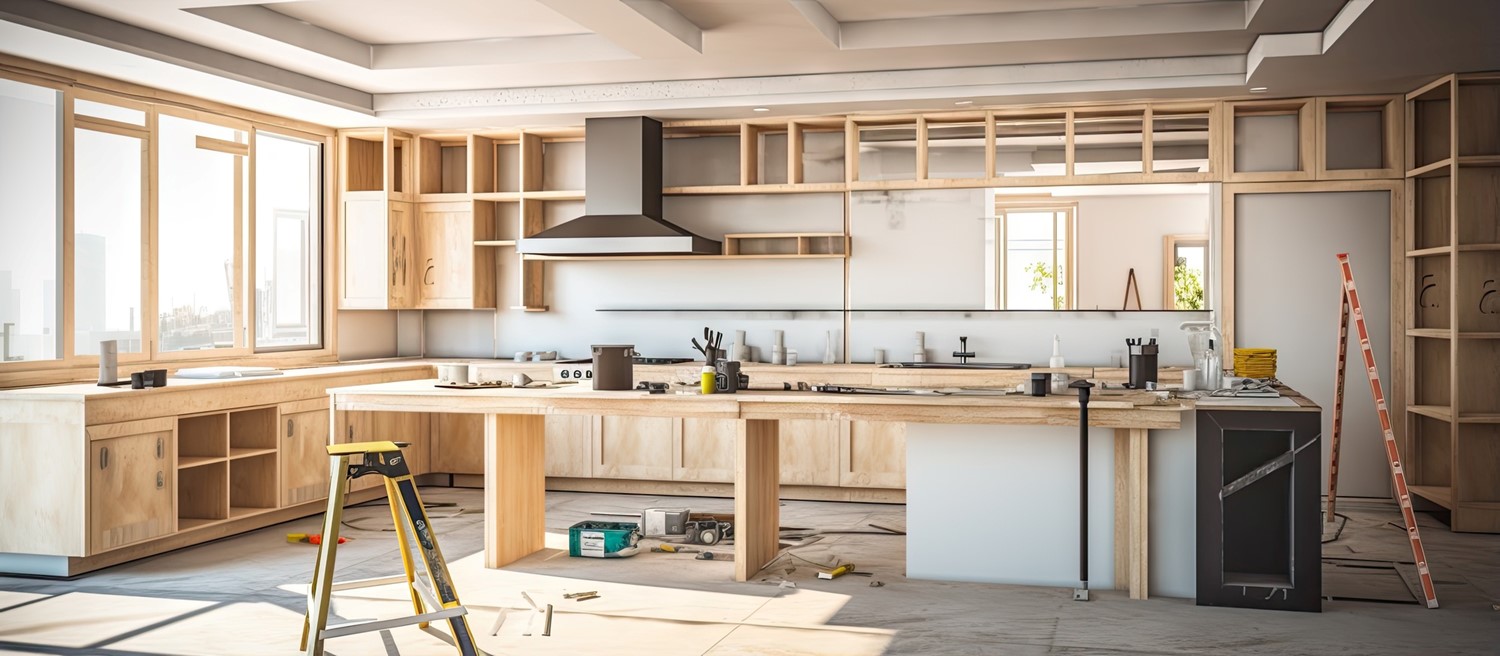
News: Budget-Friendly Home Makeovers: Affordable Design Tips
Budget-Friendly Home Makeovers: Affordable Design Tips And Tricks
Many homeowners look to update their dated homes with modern makeovers. Home renovations can be costly. But giving an older home a new life is still possible even when on a tight budget.
Crisp white walls, cleverly upcycled furniture and creative DIY accents can drastically change a space, proving that beautiful home makeovers don't require breaking the bank. For those looking to redecorate affordably, from savvy homeowners to those seeking inspiration, read on for achievable tips and tricks for affordably designing your dream home
1. Transform Your Walls On A Budget
The Power of Paint
A fresh coat of paint instantly lifts a room. Consider lighter, neutral shades like off-white or pale grey to open up a space and maximise natural light. For a splash of colour in living areas, opt for soft sage green or calming blue. Use the 60-30-10 rule as guidance for the room's palette. This rule suggests that 60% of the room should be a dominant colour, 30% a secondary colour, and 10% an accent colour, distributed among walls, furniture and decor.
To save, look to budget-friendly paint brands for quality low-volatile organic compound (VOC) options. Or make the most of leftover paint for furniture projects or accent walls.
Creative Wall Coverings
Wallpaper can be pricey, but creative and affordable workarounds exist. Removable wallpaper, decals or stencilled patterns cost a fraction of the price to achieve a high-end look.
For textured interest, install inexpensive wood panelling or hanging plants or get crafty with painted burlap or upcycled materials. Lastly, neatly arranged gallery walls do wonders, mixing framed prints, photos and postcards collected over the years.
2. Breathe New Life Into Furniture
Upcycling Furniture
Revitalise tired furniture with affordable DIY home makeovers. The rungs of a wooden ladder transform into statement-making shelves, ideal for displaying beloved books and succulents. Or reinvent a worn dresser passed down generations by swapping outdated hardware, then painting or staining to achieve a modern driftwood finish.
Lastly, revive sagging armchairs by replacing aging foam and fabric with dense cushions and eye-catching textiles. Bold prints or vibrant velvet give that glamorous Hollywood Regency vibe.
Reimagining Secondhand Finds
Never underestimate a secondhand find. Visit consignment shops, thrift stores, garage sales or online marketplaces in search of solid hardwood pieces. Test stability, examine finishes, and evaluate any repairs needed.
Giving some vintage finds new life often demands nothing more than some elbow grease. A good clean, a bit of upgrading, or a fresh coat of paint can work magic. By saving money reimagining pre-loved pieces, you can put more towards those special finishing touches. Lush rugs and eye-catching lamps deserve their chance to shine, too.
DIY Hacks for Storage and Organisation
Optimise storage capacity in any room with a bit of DIY flair. Upcycling wooden fruit crates or similar sturdy materials into modular shelves adds vintage style for half the cost. For a roomy entryway bench, affix a hinged seat atop two weathered storage trunks bought secondhand.
Gain hanging space, too, by employing weatherproof netting, salvaged ladders or wall-mounted racks with woven baskets for a breezy boho vibe. Lastly, edit regularly, as clutter easily accumulates, then stow items smartly using matching clear bins labelled cleverly.
3. Add Personality With Budget-Friendly Decor
Textile Transformation
An easy way to revamp a room is with textiles. Swapping out tired curtains for a patterned or textured set adds a noticeable lift. New shag or sisal rugs infuse cosy texture underfoot for less.
Decorative pillows or throws layered over existing furniture camouflage worn spots while injecting colour and vibrancy. Check out discount home stores or repurpose bed sheets and blankets for ultra-affordable options.
DIY Decor on a Budget
Extend your decorating budget by creating artsy projects with materials you already have at home. Upcycle sweaters, bedsheets or wallpaper samples as textured abstract art by stretching fabric pieces over the canvas. Print a cherished quote onto thrifted silver platters using transfer paper and metal paint or engraving techniques. Then, display them with pride.
Preserve gorgeous fall foliage and blooms at their peak between glass gifted from frames bought cheaply post-season. Finally, wow your guests with personalised painted chairs, graffitied dressers or clay pots moulded and glazed using air-dry clay.
Bringing the Outdoors In
Infusing spaces with greenery instantly livens up a home, often for very little money. Lush potted plants cultivate tranquillity, nurture creativity and purify indoor air. Choose resilient plants like snake plants, pothos, or ZZ plants tailored to your home's lighting conditions. Then, artfully display them on plant stands, hanging macrame holders or mounted wall planters.
You can also forage for branches, dried pampas grass and wildflowers on nature walks to arrange in vases. Use natural elements for a refreshing touch.
The Takeaway
Achieving social media-worthy interiors is possible even on the most modest of budgets. Design your dream home, grab your tools and infuse a little sweat equity into your home makeover goals. You may surprise yourself with stunning results.
What budget-friendly revamp ideas are you itching to take on this season? Plan them well and get to renovating as soon as you can.

News: How To Customise Floor Plans for Your Family's Needs
You're out looking for a home for your family. You find a few that grab and hook you, but unfortunately, they’re not a neat fit for your needs. This happens all the time. Matter of fact, research shows that buyers visit about 8-12 houses before settling for ‘the one.’
Luckily, many building experts today leave room for you to customise floor plans to fit your lifestyle and preferences.
These building pros allow you to make structural changes like adding extra bedrooms, expanding the kitchen, reconfiguring bathrooms, etc., to personalise the look and feel. This guide shows you how to take advantage of this and customise your floor plans to meet your family's needs.
Here's what you need to keep in mind.
1. Think Traffic Flow
Think deeply about your family's daily routine. Does the morning rush involve everyone bottlenecking in the hallway? Does the after-school shuffle create a noisy parade through the living room?
If that’s the case, consider a layout that promotes smooth movement and flow throughout the home. Think of floor plans where the kitchen opens to the family room, or consider removing walls and incorporating large archways or cased openings between common areas.
2. Zone in on Your Needs
Your family is unique, and so are their needs. That's why you should focus on what works for you and them when customising floor plans. Do movie marathons call for a dedicated media room? If yes, why not include it in your house plan? Or maybe you need a home office for remote work purposes. Factor that in, too. Make sure to analyse your must-have spaces and adjust the plan accordingly.
3. Go for Multi-Functional Spaces
Too many needs but not enough room? Why not go for those that adapt as your needs change over time? That guest room in the corner can double as a home gym or office with a Murphy bed. If it meets your fancy, you can also convert a formal dining room into a homework station or craft space with a fold-away table.
Having flexible spaces allows you to maximise your square footage as your family's activities and priorities shift.
4. Accommodate Shared and Separate Spaces
There will be moments when family time is everything. But also, there will come a time when everyone wants a little ‘me time.’ You need to plan for both when customising your floor plan.
That said, consider putting in place quiet nooks to get away from all the action. Also, consider making room for spaces for adults and zones where kids can have all the fun uninterrupted. You can consider adding in pocket doors for flexibility, as they allow you to close off these spaces when you need peace and separation.
All these elements can allow a single area to toggle between different functions as your needs come and go.
5. Bring Nature In
If your family loves experiencing the great outdoors, you'd do good to bring a taste of nature right inside. That means looking at floor plans that seamlessly blend indoor and outdoor living areas.
One way to do this is to go for elements like walls of sliding glass doors or screened-in porches. You can also make do with strategically placed windows, skylights and even solar tubes. These elements can usher in an abundance of natural illumination and add to the looks.
6. Plan For The Future
As you're customising your floor plan, take a step back and think about how your needs could change down the road. If you see kids or grandkids on the horizon, leave room for additional bedrooms or convertible spaces that could become nurseries or playrooms.
If you're looking at empty nests later, you may want a suite that can house aging parents down the line. As data shows, 88% of adults aged 50 to 80 want to remain home for as long as possible. That’s why you should consider elements such as a sunroom to comfortably grow old in or roughing in bathroom plumbing for future additions.
Getting such a plan now can mean designing a space that can adapt seamlessly as your family dynamics shift.
In Closing
Laying the plan for the home of your dreams may not be a simple undertaking. But when you've got us in your corner, you can get there sooner and better.
So, don't get stuck in a rut with plans that do not suit you. Come with what you consider your dream plan and we'll help you get your dream house up. So, wait no more. Reach out to us, and together, we'll help you get a plan that works for you and your family.
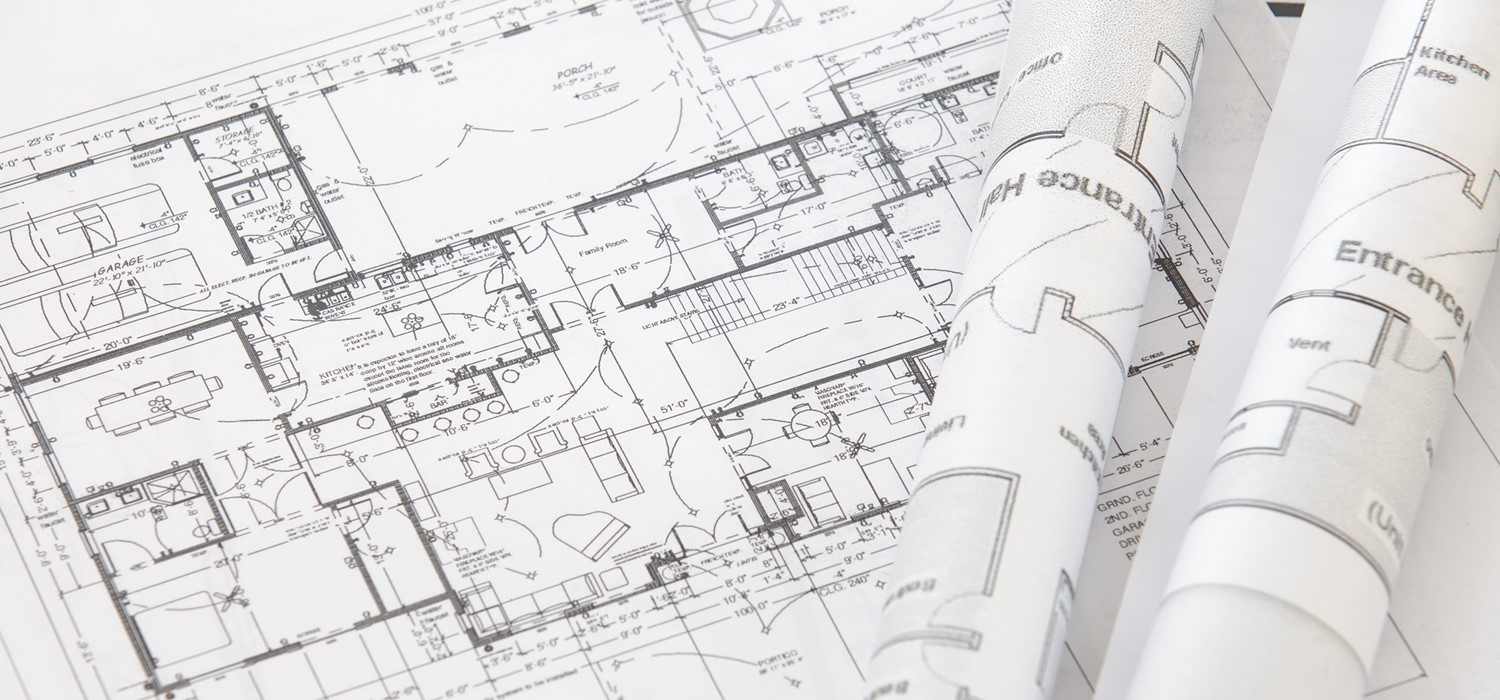
News: 10 Tips To Maximise Comfort On Your Home's Interior
Our homes should be sanctuaries, offering respite from the world's demands. But often, poorly designed spaces can become battlegrounds for aches and pains, leading to fatigue and even injury. Enter the concept of ergonomic home design, where comfort and functionality go hand-in-hand. By incorporating simple yet effective principles, we can transform our everyday environments into havens of well-being. This article equips you with ten actionable tips to maximise comfort in your home's interior, focusing on crucial areas, such as your living room, bedroom, kitchen and bathroom.When all you're looking for is a bit of peace or if you're keen on boosting your health, ergonomic design is your go-to. It's essentially the key to a living space that's comfortable and truly enjoyable to be in.Focus AreasImagine this: you sink into your plush couch, ready to unwind after a long day, only to find your back screaming in protest minutes later. This scenario, unfortunately, rings true for many of us, highlighting the disconnect between our living spaces and our bodies. By focusing on key areas within your home, you can transform them into havens of comfort and support, tailored to your specific needs. 1. Living RoomDitch the stiff, formal furniture, and embrace supportive couches and armchairs with ample cushioning and lumbar support. Invest in adjustable coffee tables that can rise or lower depending on your activity, be it enjoying a cup of coffee or playing board games. When designing or building a new home, don't forget the power of lighting. Create different zones with adjustable lamps for reading, watching movies or simply enjoying a quiet evening.2. WorkspaceInvest in an adjustable desk and chair that allows you to seamlessly switch between sitting and standing positions, preventing fatigue and promoting better posture. Consider a standing desk converter if a full-fledged adjustable desk isn't feasible. Ditch the stock keyboard and mouse for ergonomic versions that cradle your hands in comfort, reducing strain on your wrists and forearms.3. BedroomNowhere is ergonomic design more crucial than in your bedroom, the foundation of a good night's sleep and overall well-being. Invest in a supportive mattress and pillows that align your spine and cradle your body in comfort. Adjustable bed bases make a big difference, letting you raise your head and feet for reading, watching TV or just relaxing in bed.Blackout curtains serve as an effective tool in promoting continuous sleep by obstructing intrusive light and fostering a tranquil resting atmosphere. Consider an air purifier to remove allergens and pollutants, creating a cleaner and healthier breathing space for a truly restful night.4. KitchenEnsure your countertops are at a height that allows you to comfortably chop, cook and prep food without straining your back. Opt for well-placed cabinets and drawers to avoid awkward reaching and bending. Invest in anti-fatigue mats for areas where you spend long periods standing, providing cushioning and support for your feet and joints.5. BathroomFor enhanced accessibility and safety, particularly for older adults or individuals with mobility challenges, a walk-in shower is a practical choice. To augment this, installing grab bars adjacent to the shower, toilet and bathtub provides additional stability and support, crucial for preventing accidents.Further improving the shower experience, adjustable showerheads offer the flexibility to tailor water flow and height, ensuring maximum comfort. Additionally, incorporating bright but diffused lighting enhances the grooming and makeup application process, mitigating eye strain and contributing to an overall pleasant bathroom experience.These are just starting points. As you explore each area, personalise the ergonomic solutions to fit your unique needs and preferences.General TipsWhile focusing on specific areas is crucial, remember that ergonomic comfort extends beyond designated zones. Here are some general tips to create a continuous sense of well-being throughout your entire home:1. Declutter And OrganiseClutter breeds physical and mental stress. Regularly declutter and organise your belongings, utilising storage solutions that keep items within easy reach and avoid awkward bending and stretching. A tidy environment promotes ease of movement and reduces unnecessary strain.2. Embrace Natural Light And VentilationSunlight is a natural mood booster, promoting alertness and reducing eye strain. Maximise natural light by opening curtains, utilising skylights and strategically placing furniture. Similarly, fresh air is vital for well-being. Open windows regularly and consider air purifiers to combat pollutants and allergens. A well-ventilated and sunlit home fosters both physical and mental comfort.3. Personalise Your SpaceErgonomic design isn't a one-size-fits-all solution. Adapt and adjust ergonomic elements to your unique needs and preferences. Experiment with different chair heights, keyboard positions and lighting levels to find what works best for you. Remember, comfort is subjective, so tailor your space to reflect your individual needs and preferences.4. Invest In Quality FurnitureThough the upfront cost may appear steep, investing in quality furniture that emphasises ergonomics is a wise decision for the future. Seek out items that offer adjustability and proper support for your lower back and are crafted from materials that endure. Opting for quality furniture is not merely an expenditure; it represents a commitment to your ongoing comfort and health.5. Take Breaks And Move AroundNo matter how ergonomically designed your space is, sitting for extended periods can lead to discomfort. Set regular reminders to get up, move around and stretch your body. Take a walk around the house, do some quick exercises or simply change positions. These small breaks can prevent stiffness, improve circulation and boost your holistic well-being.By implementing these general tips alongside the focused area suggestions, you can create a home that truly embodies ergonomic comfort.ConclusionIncorporating ergonomic principles into your living space does more than just amp up the cosiness—it's a game-changer for your overall well-being. It's amazing how small tweaks can make your place so much more comfortable and practical. Tailor your space to suit what you like and what your body needs. In the end, you're crafting a haven that backs up your health and makes every day better.
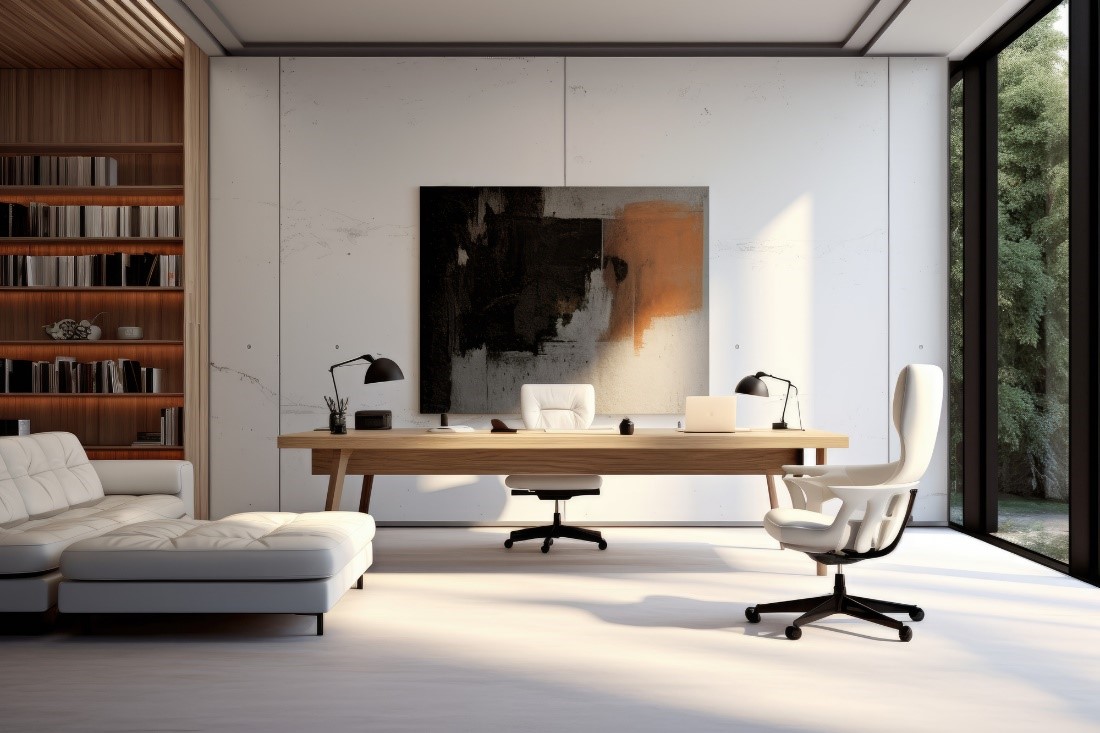
News: Two-Storey Homes: Meeting Lifestyle Needs With Vertical Space
In recent years, two-storey homes have gained significant attention for their unique advantages. One of the most notable is the ability to offer more living space without requiring a large plot of land. This smaller footprint can be especially beneficial in urban or suburban areas where land is at a premium. Economic benefits can’t be overlooked. Building upward often involves lower land costs compared to sprawling single-storey home designs. This makes two-storey homes a financially sound choice for many families. In this article, we’ll delve deeper into these advantages, as well as touch on practical tips on optimising vertical space in your home for various lifestyle needs.1. Optimising The Ground FloorThe ground floor of a two-storey home serves as the heartbeat of daily life. Its design can either facilitate a smooth flow of activities or create bottlenecks.Open Floor Plan For Social AreasAn open floor plan allows various functional zones to coexist in a single open space. It eliminates obstructive walls between the kitchen and dining and living rooms. This design fosters an inclusive atmosphere, making it easier for family members to engage with each other. Additionally, it grants the flexibility to rearrange furniture to suit various needs and occasions.Kitchen, Dining And Living RoomWhen designing your open floor plan, consider the specific needs of each functional zone. Place the kitchen close to the dining area for easy serving. Ensure the living room is far enough from these zones to reduce noise interference, yet close enough to maintain a connected feeling. Include enough storage solutions and remember that good lighting is essential for all areas.A thoughtfully designed ground floor maximises the social and functional aspects of two-storey living. By considering these elements, you set the stage for a home that’s both practical and inviting.2. Mastering The Upper FloorThe upper floor of a two-storey home is typically a sanctuary for personal space and relaxation. A well-crafted design here translates to a harmonious living experience, complementing the social dynamics of the ground floor.Upstairs Master SuiteA master suite on the upper floor offers a secluded retreat, away from the hustle and bustle of communal areas. This setting provides a backdrop for relaxation and privacy. Imagine a spacious room filled with soft, natural light, a walk-in closet, and an en suite bathroom. Kids' Rooms And Family-Oriented SpacesFor families with children, the upper floor is often where the kids' rooms are situated. Design these spaces with room to grow, considering both current needs and future ones. A nearby family room or a shared play area can be a beneficial addition. It offers a centralised space for children's activities while keeping clutter away from the main living areas.Bathrooms And Relaxation ZonesThe bathroom layout on the upper floor should cater to daily routines. Consider placing the bathroom near the bedrooms for convenience. Opt for features like ample countertop space and good lighting to enhance usability. For those who seek a spa-like experience, a soaking tub or a rain shower can be a luxurious touch.Relaxation zones such as reading nooks or mediation corners can also find a home on the upper floor. Position these areas near natural light sources and away from noisy sections of the house. Soft furnishings and calming colours can augment the tranquillity of these spaces.The upper floor of a two-storey home should be a haven for personal space and comfort. A strategic layout paves the way for a harmonious, private and deeply satisfying home environment.3. The StaircaseOften overlooked, the staircase in a two-storey home serves more than just a utilitarian role. Giving the staircase the attention it deserves can elevate the overall aesthetic and functionality of your home.Design ElementThe staircase can serve as a visual anchor in your home's interior layout. Materials like wood, steel, or glass can be suitable in this regard. Choose a design that complements your decor, whether it's modern, traditional, or eclectic. In some cases, staircases with open risers or intricate railings can become a striking focal point.Storage Opportunities Under The StaircaseThe space beneath a staircase often goes under utilised, but it offers significant storage potential. Pull-out drawers or cabinets can house shoes, books, or seasonal items. For a cleaner look, you might choose concealed doors that blend into the wall. This covert storage solution maximises available space while maintaining a clutter-free environment.Safety TipsSafety should never be compromised, particularly in a feature as critical as a staircase. Non-slip surfaces, adequate lighting and sturdy handrails are all essential elements. Moreover, consider the rise and run of the stairs. These should be consistent to avoid tripping hazards. If the home includes small children or elderly residents, you might consider installing safety gates or extra railing for added security.A staircase is much more than a means to move between floors. It presents opportunities for design expression and innovative storage.
ConclusionTwo-storey homes are far more than stacked rooms. They offer a layered approach to lifestyle needs, providing separation when required and communal spaces for family interactions. Economic advantages, such as lower land costs, make them a financially astute option for many.Given these benefits, it's worth considering a two-storey home when planning your next move or construction project. It offers a balanced approach to modern living, combining aesthetics, functionality and adaptability in one cohesive package.
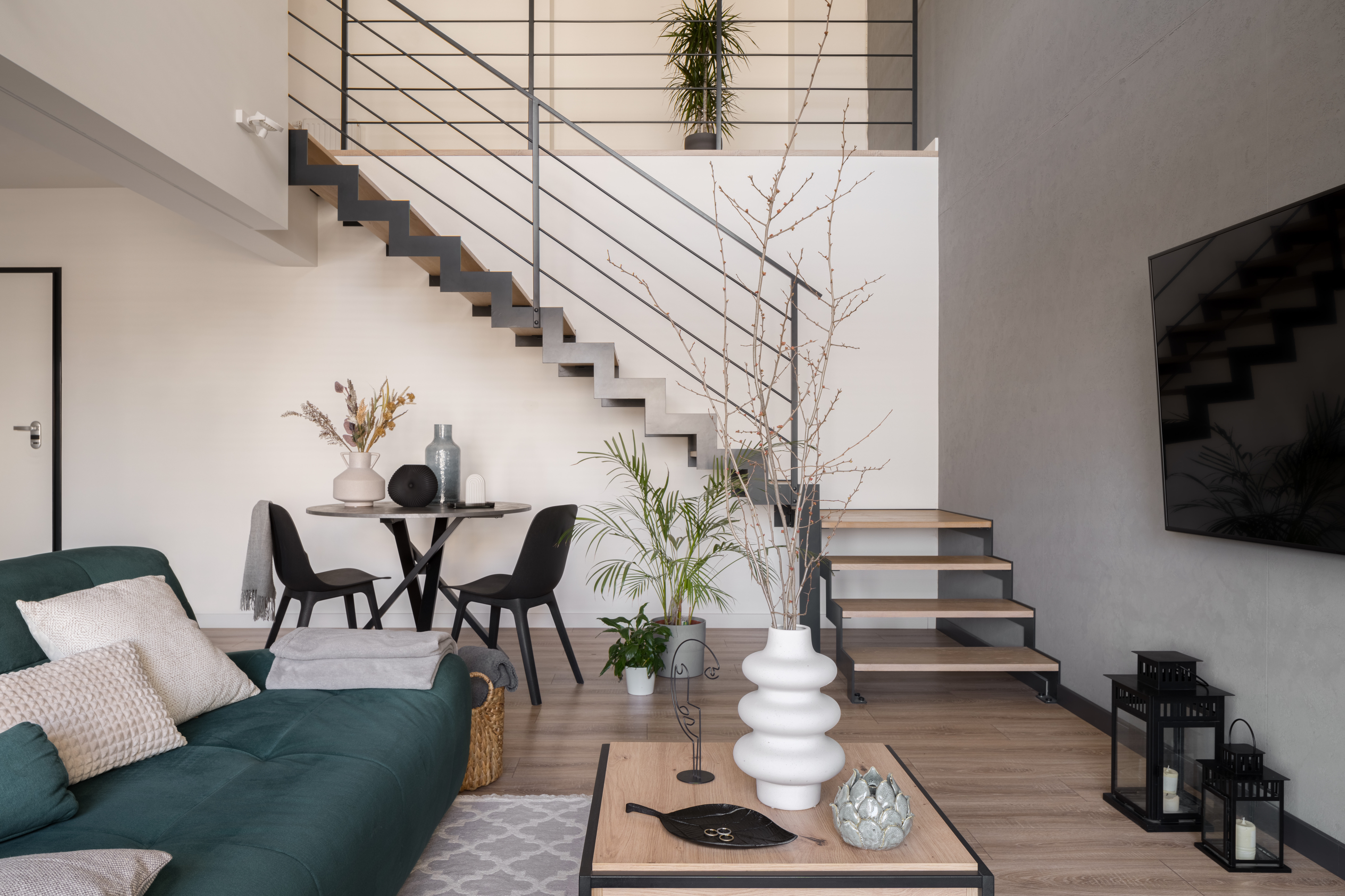
News: How Much Does It Cost To Build On A Sloping Block?
As a company designing and building houses for the past 40 years, we can tell you with certainty that the Earth isn’t flat. Rises and depressions of varying degrees are in every landmass. Looking at a topographical map of Australia, you’ll notice that roughly two-thirds of the country sits on an elevated area or next to it.As a result, sloping blocks are as common as flat sites. They pose a challenge to designers and builders, as standing or walking on an incline isn’t exactly comfortable. The extra procedures builders have to do make building on a sloping block cost hefty, with one estimate adding between AUD$40,000 and AUD$100,000 on top of the baseline price.But why does it cost that much? More importantly, is the extra cost worth it?Two Major ConsiderationsHome builders agree that they often consider two factors in determining the cost of building on a sloping block. The first is the gradient, which they calculate by getting the rise and run of the lot. For example, a lot with a 500-mm rise and 10,000-mm run gets a gradient of 1:20 or 5%.Home builders generally consider a gradient of less than 10% shallow, while a gradient of over 20% is steep. They also point out that the cost of sloping block homes can significantly increase for slopes of 15% and above due to more work being done and more safety concerns. Depending on the project, the cost increase can be between 30% and 50%.Some projects have built homes on gradients of up to 50% but necessitate complex foundations. This increases the amount of building materials needed, such as concrete and steel. Additionally, the foundations will be buried deeper underground for stability.The second consideration is whether the land is an upslope or downslope relative to the street or road. Upslope construction is more complex than downslope because it requires displacing more earth to make the site easier to build on. Either way, the displacement requires trucks and other heavy equipment.Runoff ManagementEven with robust foundations and proper cut and fill, homes on sloped blocks are still vulnerable to natural occurrences. If anything, homeowners should be more aware of how the land redirects rainfall from roof to drainage.Martin Brook, associate professor of applied geology at the University of Auckland, said urban development is as much of a factor in worsening natural disasters as climate change. Citing the recent landslides in Auckland brought about by record rainfall, he warned that the weight of any building could weaken the soil over time, regardless of the soil’s geological properties.It won’t take record rainfall for any developed slope to give way, so paying attention to a house’s runoff management is a must. You’d want to keep water away from the foundations to minimise the risk of a landslide and, ultimately, structural failure. But you also don’t want it to spill over to your neighbour or the road, lest you risk flooding.Two of the most common solutions are retaining walls and soakaways. Retaining walls keep the water out of the structure, while soakaways allow pooling water to permeate back to the ground. They’re a must for cut-and-fill and split-level site preparation. Meanwhile, soakaways are excavations partly filled with rocks or gravel. They’re usually made where runoff pools are, allowing water to permeate back to the ground. However, leaves and debris can also make their way and block the soakaway, so it must be protected with a filter.Worth It?Building a home is expensive enough, and making one on a sloping block adds to the expense. But is the latter worth it?Sometimes, a homeowner won’t have a say in the matter. As mentioned at the beginning, about two-thirds of Australia sits on an elevated area. The closer you want your home to the highlands, the more likely you’ll have to contend with sloped land. Even in a predominantly flat area such as Sydney, there are bound to be sloping blocks.However, there are ways to lessen the cost, such as building on sloped land bought for cheap. On top of that, it gives homeowners more options for implementing the features they want to see in a home. For example, sloping blocks enable home designs to add more windows, allowing people to see and appreciate their surroundings from more angles.Another advantage is that it permits the addition of a walkout basement, granting direct access to the outdoors instead of moving through the house’s interior. It adds more living space to a home without expanding horizontally.ConclusionBuilding homes on sloped land isn’t easy, nor is it affordable. Builders must ensure the building doesn’t disturb the earth it sits on, even if it means adding several more items to their to-do list. But when done by the book, it’ll be a home anyone can be proud to own.
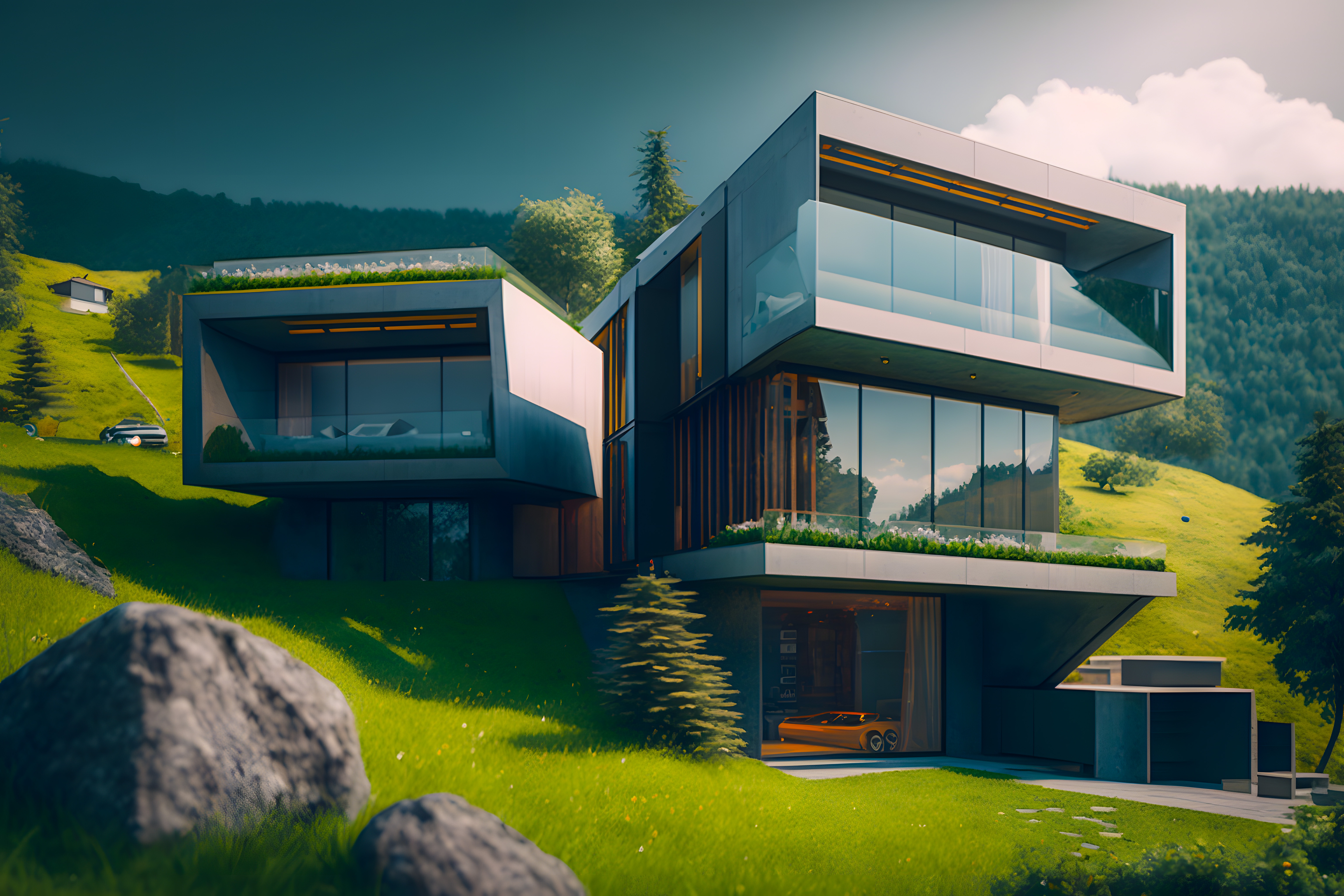
News: Surprising Advantages Of Building On A Sloping Block
Are you ready to step off the beaten path and explore the hidden potential of building on a sloping block? While it's true that uneven terrain can be challenging, those who dare to embrace the adventure of constructing their dream home on a slope will uncover a trove of unexpected advantages. In this article, we'll dive into the remarkable benefits of building on a sloping block that will challenge your preconceptions and leave you eager to embark on this thrilling architectural journey. Let's start by understanding why some homeowners build on a sloping block. Why Do People Build Their Houses on a Slope? Constructing a house on a sloping block may not be the most conventional choice, but it's one that more and more homeowners are embracing. The reasons for this decision vary, but common motivations include the desire for a unique architectural design, the opportunity to maximize views, and the availability of land. As flat blocks become scarcer in popular urban and suburban areas, people increasingly turn to creating homes on sloping blocks as a viable alternative. With the right approach, building on a slope can lead to a stunning, one-of-a-kind home that stands out from the crowd. And as a good start, hiring skilled design professionals and builders with extensive experience in constructing custom sloping block homes is key to your project's success. The Surprising Benefits of Building on a Sloping Block The challenges of uneven terrain can lead to innovative designs that set your property apart and make the most of its natural features. Here's a look at the benefits that make building on a sloping block an attractive option for many homeowners. Breath-taking Views Sloping blocks often provide exceptional vistas of the surrounding landscape, be it a city skyline, serene water body, or lush greenery. By building on a slope, homeowners can capitalize on these views and connect with the outdoors, making their living spaces open and expansive. 2. Unique Design Opportunities Building on a slope encourages architects and designers to explore innovative design solutions that cater to the unique topography. This paves the way for truly memorable homes with features like split-level layouts, cantilevered rooms, and terraced outdoor spaces. 3. Enhanced Privacy Sloping blocks can offer increased privacy, as elevation changes can obstruct direct lines of sight from neighbouring properties. This advantage lets homeowners enjoy their outdoor living areas without feeling exposed or overlooked. 4. Efficient Use of Space Sloping blocks can help maximize the usable space on a property. By incorporating tiered landscaping or terraced gardens, homeowners can make the most of their land and create visually interesting outdoor areas. 5. Environmentally Friendly Construction Building on a sloping block can reduce the need for extensive land clearing and earthworks, thus minimizing the environmental impact of construction. Additionally, the natural slope may aid in water drainage and erosion control. 6. Boosts Energy-Efficiency A well-designed home on a sloping block could present numerous opportunities to capitalize on natural elements such as ventilation and lighting. Let's explore how these homes can enhance these aspects, creating a comfortable and energy-efficient living environment. Better Ventilation Sloped sites often feature varied elevation levels, which could help promote natural airflow throughout the home. This is particularly true for homes with open layouts and strategically placed windows, doors, and vents. By positioning windows and doors on opposite sides of the house, you can enhance natural airflow, reducing the need for air conditioning and ensuring a comfortable indoor temperature. Optimized Natural Lighting The elevated positioning of the house on a slope often results in unobstructed access to sunlight, allowing ample daylight to enter the living spaces throughout the day. This can be further enhanced by thoughtful window placement and using skylights or large glass doors, significantly reducing the reliance on artificial lighting. As such, it can lower energy bills and reduce carbon footprint. 7. Better Return On Investment Besides the benefits outlined above, building on a slope may result in a higher return on investment, as these distinctive homes can command a premium in the real estate market. By selecting an experienced builder specializing in sloping block constructions like us, you can ensure that your home meets your expectations and exceeds them in ways you never imagined. Concluding Thoughts Building on a sloping block presents a wealth of surprising advantages and benefits that can elevate your home design to new heights. With the right approach and a skilled team, a sloping block can be transformed into a dream home and a property gem. If you're ready to embark on the exciting journey of building your dream home on uneven terrain, trust the expertise of Beechwood Homes. Our skilled team specializes in creating innovative and stunning custom-sloping block homes that cater to your unique needs and make the most of your property's potential. Don't miss this opportunity to turn your vision into a reality. Contact Beechwood Homes today, and let's start crafting your one-of-a-kind masterpiece together.
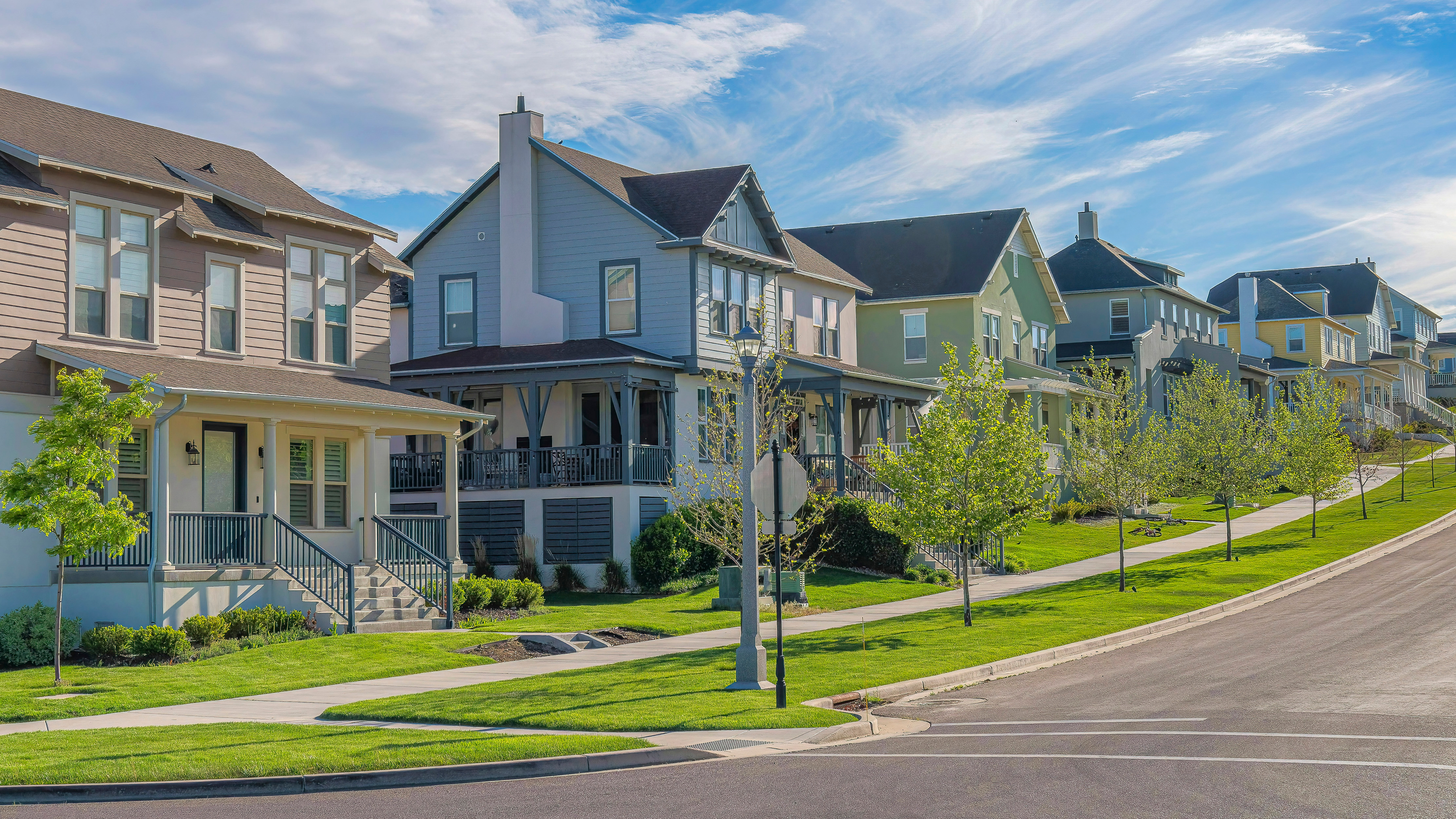
News: Things To Know When Building A Custom Home
Everyone dreams of having a pleasant and comfortable home built to fit their needs and lifestyle. But not everyone can have a custom home for several reasons, and others resort to buying production homes to hasten their property acquisition process. Building a home involves significant investment and careful planning, especially if it's custom-built. Prospective homeowners must consider several factors, including their budget, where to build, the design, the floor plan, and the right home building contractor for the job. A custom home project is more challenging and requires additional effort time, and budget. Because of the precious resources involved in building one, you must get everything done right as a home buyer. Here are the things to consider for a successful custom home build. 1. You're likely going to spend more with a custom home Knowing how much you can afford is key to any successful home construction project. Without a ballpark figure, a prospective property owner like you will have challenges choosing the land to purchase and planning the size or the features to include in your dream home. Home costs in Australia vary depending on the location, land cost, taxes, fees and others. As of April 2022, the median price for a new home construction stood at AUD$ 473,000, according to the Australian Bureau of Statistics (ABS).Getting pre-qualified if you're getting a loan is vital to know how much you can allocate, including the mortgage repayment costs. If you need more help, apply for a homebuilder grant, which provides up to AUD$ 25,000 to qualified individuals. More importantly, prepare a contingency budget to cover incidental expenses for your custom house, as you'll likely need it. Building a custom home checklist is a great idea to ensure you cover all bases early and as the project goes along. 2. Be flexible with your timelinesBuilding a new dwelling takes 4 to 12 months, excluding land acquisition and property design processes. You and your contractor may have agreed to specific timelines, but move-in dates are never final. With a custom home, nothing is planned, selected, or designed permanently ahead of time. Because of this, the process takes significantly more time. Delays are often inevitable in various project stages, especially for custom homes. For instance, you may have to wait for construction material deliveries, or the weather may be too cold or rainy, leading to missed deadlines. 3. Choosing an ideal location requires research Your custom home's location is one of the more important considerations when building a custom house. Researching the site and understanding the inspection and survey results can impact your property's structure and design. For instance, identifying in which section the sun rises is essential to know where to place your windows. Local housing laws and building codes can also impact your home's height, size and amenities. If you live in a historic district, you may have specific restrictions on your residence's design and materials. It's best to talk with professionals, such as architects, for advice on maximising your property and getting the design you want while remaining compliant with local and national regulations.4. Designing your custom home is daunting A custom home allows you to build a house according to your needs and lifestyle. Besides regulations and budget, consider your present and future when designing your bespoke living spaces. Your design, features and home layout will depend largely on how you envision your future. It can likewise dictate the materials needed for construction. For instance, a one-bedroom dwelling isn't enough if you plan on having two kids. Similarly, pet lovers may skip wooden floors to prevent early damage from scratches. Talk with an architect or a designer and discuss your design preferences or create a brief. See if they align with the other primary considerations in building a custom house. 5. Hiring the right building professionals is keyChoosing the right builders is the most significant of the several considerations when building a custom home. Your chosen project contractor must be capable of breathing life into your dream home. Start by asking for referrals or researching different reputable builders in your area. Make a shortlist, then schedule a meeting with each. Look at their portfolio to determine their experience and specialties. Raise relevant questions and observe how they address your queries and concerns. Communication is key to a successful project, so note which contractor you feel most comfortable talking with. Additionally, ask for a sample contract and check whether the firm possesses the appropriate permits and licenses, including insurance coverage. Reach out to the firm's previous clients and learn more about their experience. If another project cropped up, would they hire the builder again? Why or why not? 6. Active involvement is vital While you don't need to be at the site the whole time, show up and communicate with your builder daily. Doing so lets you see the progress and check whether the timelines are followed. Take photos of the construction process.Showing up helps prevent delays, as you might be asked to validate or choose home design elements, like finishes, colours and other selections. As the project owner, you may also have to decide quickly on your home's aesthetic features and other concerns. Concluding thoughts There are several stages involved in the custom home building process. These stages require property owners to take a hands-on approach to ensure that everything works as expected. At the same time, bespoke house construction requires future homeowners to be patient, responsive and proactive in handling inevitable circumstances like delays and unexpected costs.
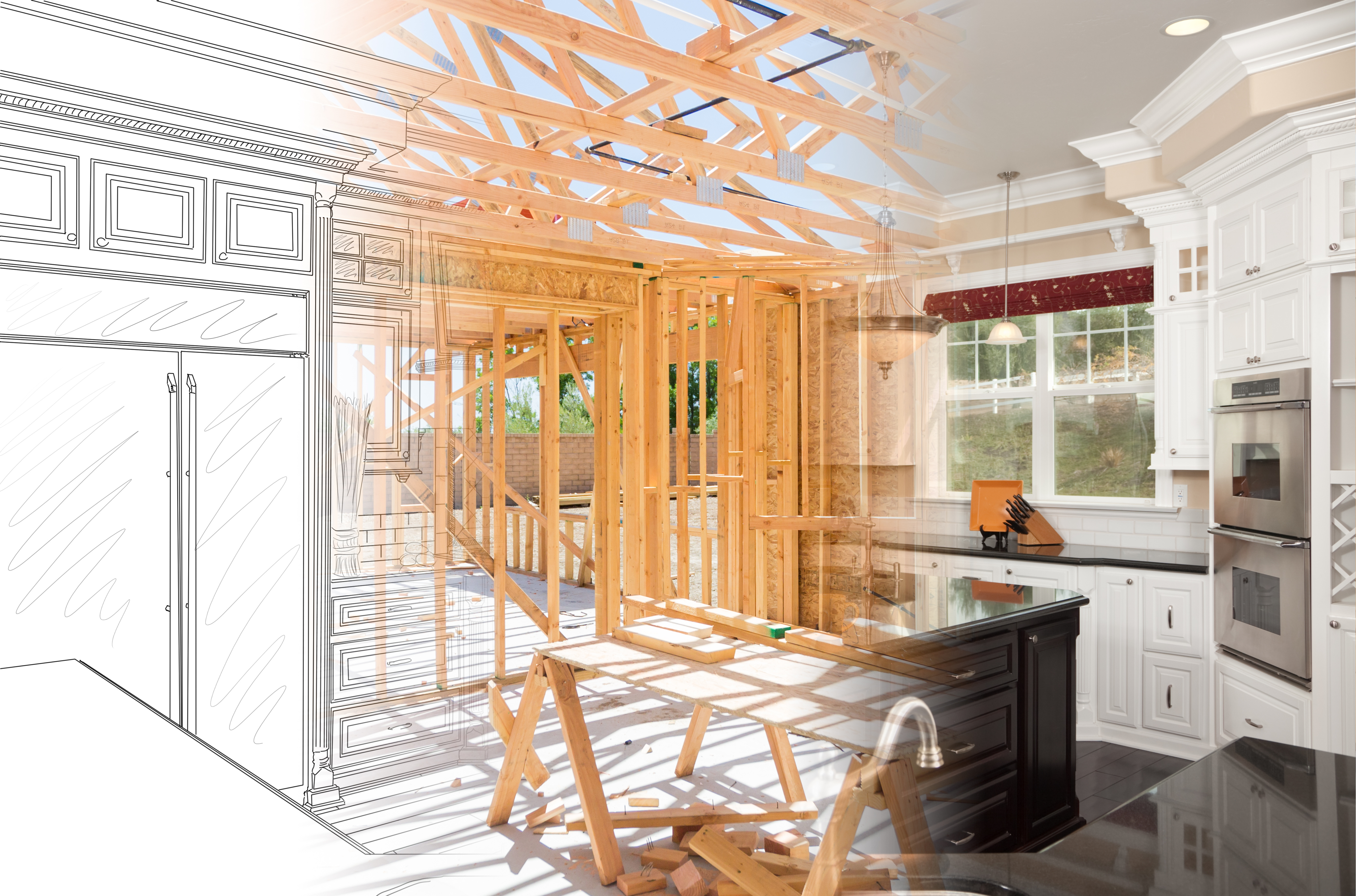
News: 7 Traits Of A Good Home Builder
Home building can be intimidating, so finding the right builder for the job is a critical step. There are many components to consider when evaluating home builders. Choosing one that's going to create a quality end product at a price you're comfortable with is one of them.Before signing on the dotted line, you must ensure your potential builder has the necessary skills, experience and attitude. But what exactly should you look for? We have compiled seven key traits of a good home builder so you can rest assured that your new home has been created by experienced professionals with the expertise needed to get it done well. Read on to learn more about these critical characteristics and why they’re essential for any successful build or renovation project.1. Good CommunicationWhen looking for a good home builder, proper communication is essential. Their ability to effectively communicate with you and their team sets the tone for a successful building project. A good home builder should be able to articulate their plans for the project and answer any questions you may have about it. They should also be readily available to address any concerns or make changes if needed to make your dream home a reality. With open dialogue and communication, a good home builder will have the necessary skills to make your dream a reality. Therefore, communication is integral to every good home builder's qualification list.2. FlexibilityWhen looking for a reliable home builder, you want to ensure that they’re flexible - any project, big or small, should fall within their scope of work. They should be open to leaving space for customising the build according to how you envision it. They should also accommodate your style preferences. Furthermore, a good home builder can adjust their usual processes and consider existing conditions or quickly evolving plans. As with any other job you hire someone for, please do some research ahead of time and read online reviews from people who have worked with them. These will give insight into how flexible the builder is.3. ExperienceFinding a good home builder can seem like a challenge, but there’s an array of traits that you should look for. Primarily, experience should always be at the top of your checklist. The longer someone has been in the game, the more likely they’ll provide you with good work. Websites dedicated to home builders usually list how long they've been in the business, how many jobs they've done, and reviews from past clients. So, do your research. If possible, get a recommendation from friends or neighbours who've had their homes built recently. 4. IntegrityIf you're looking to find a trustworthy and reliable home builder, it's essential to look for signs of integrity. Good home builders should fully disclose all their fees upfront and provide clear timelines before beginning the project. Additionally, they should be able to answer any questions honestly and thoroughly. Furthermore, keeping communication open and honest throughout the home building process ensures that the job is completed on time and according to plan. When selecting potential home builders, notice how they handle themselves. Are they communicating accurately and respecting confidentiality? These traits will likely indicate how much of an advantage a good home builder is.5. Commitment To QualityWhen it comes to finding a good builder for your new home, it's essential to look for a committed professional. Quality is key. Any trustworthy home builder should have extensive experience and a time-tested track record of successful projects. Ask to speak with other homeowners about how satisfied they were with their experiences and research the portfolio of any potential builders. Ensure good attention to detail, standard of craftsmanship and professionalism, dedication to quality materials and construction techniques. Ultimately, you want someone with the right abilities and drive to meet your needs and expectations. 6. Time-EfficientIf you’re looking to build a home, how can you know if your home builder is good? The most important trait a good home builder should have is being time-efficient. When constructing a home, there’ll always be tight timelines and deadlines. A reliable home builder will stay on track with construction progressions and ensure that each task is completed in the allotted timeframe. Not only this, but they’ll also consider how their decisions affect your end goal timeline and make necessary adjustments. 7. Specializes In The Style Of Home You LoveWhen it comes to knowing if a home builder is good, one of the critical traits should be how well they specialise in the style of home you’re looking for. Do your homework and research ahead of time. Ask around and see if anyone has worked with them in the past. Check out reviews online and look into how experienced they are in building homes you dream of owning. Specifically, if you want a Victorian-style house, check if your prospective builder has done one in the past. Execution could go wrong if they don’t specialise in the home style you prefer. ConclusionHome construction is one of the most significant investments you’ll ever make. As such, you must do your research when selecting a home builder. Ask around for referrals, look at online reviews and, most importantly, tour completed homes that were built by the company you’re considering. A good home builder will be communicative, have strong attention to detail and build homes that their customers are happy with. With many choices out there, finding a reputable home builder with the traits above should be your priority.
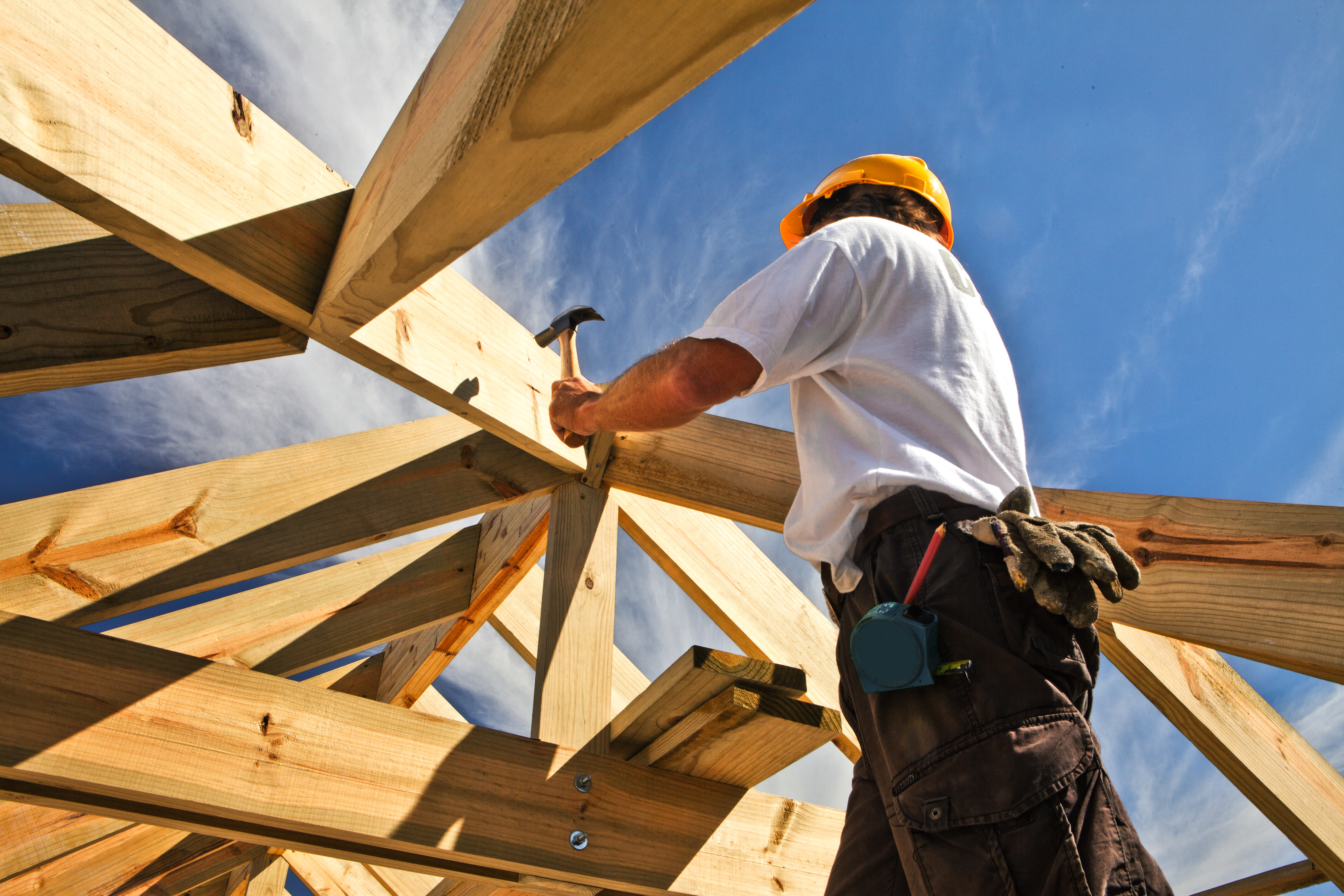
News: Choosing A Custom Home Builder For Your Dream Home
You've probably had this slideshow of images in your head about how your dream house would look. Pored through magazines and watched endless home designing shows - even created your mood board! But when the opportunity arises, would you go for a prebuilt house or choose a custom home builder to help you make the home of your dreams? Buying a house that looks almost like that picture in your head is often a lucky break. But if you are tired of waiting for that house to come your way, you can consider a custom home builder to build your dream home or choose a floor plan from a reputable builder who can customise the living space you want without the costs of a hired architect. Cookie Cutter Home, Customised, Or Both? If you've ever lived in a residential project, there is often a "sameness" to the look, and in most cases, you aren't allowed to flex your creative muscles. The houses are usually built from a blueprint or variations of the same plan. The specs may differ – for instance, there may be more (or fewer) rooms or a more oversized kitchen, but the materials and overall house theme used are usually the same. However, going with a custom home builder can be a costly undertaking. It may be downright expensive because of the design costs. But what if you can customise a home design and give it a personal touch without breaking the bank? Beechwood, an experienced project home builder that has built project homes across NSW, offers the best compromise. With over 40 years of track record in Australia, this company has transitioned to custom home building and creates modern homes tailored to your needs. So, if you are a client who is not 100% sure that the houses on the brochure are for you, discuss your options with the experts in construction and design. Why Choose A Custom Home Builder? There are several reasons one may choose to work with a custom home builder when planning for their dream home, and these include: 1. It allows you to personalise your home Working with a custom home builder allows you to design and build a home tailored to your specific needs, preferences, and lifestyle. You can have better control over the design and layout of your home. In addition, if you’re looking to expand your family in the future, an experienced home builder can anticipate and incorporate this when planning your dream home.A custom home builder can also help you personalise your home to reflect your style and tastes. This means you can explore different architectural styles and aesthetics for your home, as well as the selection of materials and finishes. 2. It ensures quality craftsmanship and professionalismCustom home builders are experienced and skilled in their craft, which can ensure that your home is built to a high standard of quality. They also use higher-quality materials, finishes, and innovative construction methods, resulting in a more dBesides their skills and expertise, custom home builders can provide you with a timeline, determining the project milestones and target completion date. It'll allow you to monitor the progress of your home's construction and whether or not it's on track or delayed. 3. It gives you control over costsWorking with a custom home builder can help you stay within your budget by enabling you to make decisions, from your home’s features to building materials. You can work closely with them throughout the process, bringing your vision for your dream home to life and setting realistic expectations according to your budget. 4. It enables you to explore eco-friendly optionsWorking with a custom home builder allows you to incorporate eco-friendly design solutions in your home, such as solar power, energy-efficient appliances, and green building materials. This goes a long way in promoting sustainability at home while also lowering your utility bills. 5. Compliance with standardsOne of the significant benefits of hiring a custom home builder is they can help ensures that your dream home is safe and compliant with local standards and regulations. This can help save you from expensive renovations in the future or penalties from the local government. They can also prepare and file the necessary plans and permits on your behalf for your home’s construction, reducing the stress from your end. Wrapping It Up Your dream house is a significant investment that should meet your needs and requirements and reflect your personal style and aesthetics. When you want a more personalised plan, you can approach a firm with the skill and experience to breathe life into your vision. This post has outlined some benefits of hiring a custom home builder to help you get started.

News: Exciting news : Beechwood Launches Ascension Living
Beechwood Homes are proud to introduce Ascension Living. This company has developed a modular building system designed to streamline the granny flat building process and has a FULL SIZE granny flat on display at the HIA Sydney Home Show this weekend at Darling Harbour. Stop in this weekend to find out more about this amazing home! Even Beau Ryan took us for a tour! The Modular Granny Flats from Ascension Living have:Energy Efficient Design and ConstructionModern Open Plan DesignsQuality Finishes and Inclusions
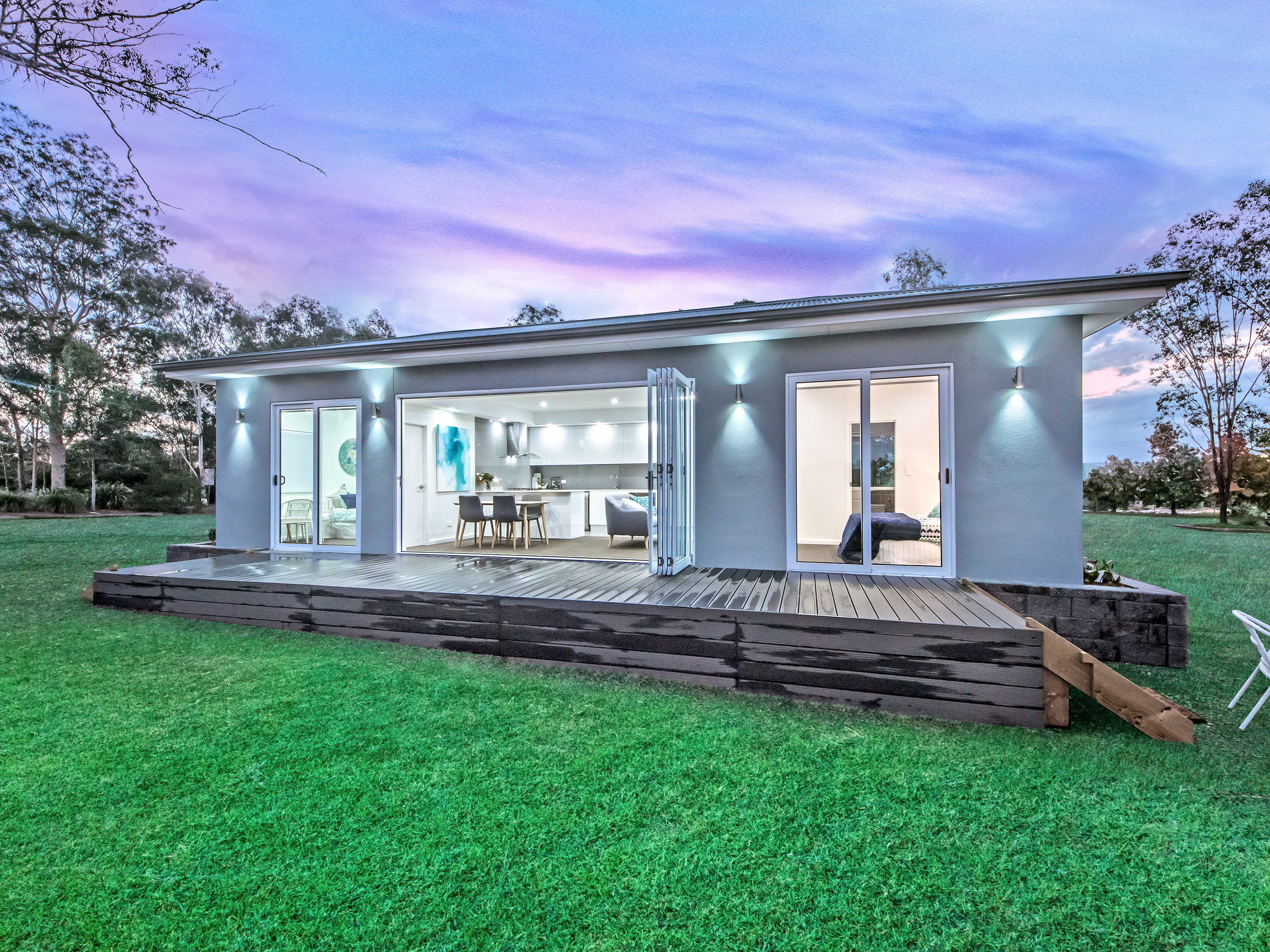
News: Six top tips for building on small or narrow blocks
Don’t like mowing the lawn? Well you’re in luck – today, blocks of land in new residential housing developments across Australia are around one-third to one-quarter the size they were in the 1950s, with much of the shrinking occurring post-2000.At Beechwood we have been building new homes in NSW for nearly 40 years. Over that time, we have seen greenfield median lot sizes drop to an all-time low, particularly in Sydney.This trend has moved particularly quickly over the last decade. In the late 2000s the blocks in Sydney we were building our new homes on were mostly 500 square metres or more; today we are regularly building new homes on blocks that are less than 400 square metres. And it’s not just new blocks of land either. Pre-existing blocks are also decreasing in size due to urban consolidation and a rise in the number of lots being sub-divided.With the demand for land in NSW, especially across Greater Sydney, pushing land sizes down and land prices up, matching the right block of land with the right new home design from the right builder can be a challenge for home buyers in Sydney and up and down the NSW North Coast and South Coast. To address this change, we created a range of innovative new designs for smaller blocks.How to maximise space on small or narrow blocksSmall blocks don’t necessarily mean small living spaces and uninspired homes. In fact, it’s quite the opposite. It all comes down to the home builder and the home design that you choose. Here are our top tips for building on small or narrow blocks. Tip #1: Make your space work harder for youLook for a versatile, compact floor plan where rooms can be used for multiple purposes. A popular modern design feature is the ‘great room’, a seamlessly blended, multi-functional space. Look for designs with a kitchen that flows into a great room that you can use as a living, dining and play space.Tip #2: Focus on spaciousness by embracing open plan livingLook for a clever and efficient design that fits on your block of land while still creating a generous sense of spaciousness through open plan living. The best designs for small or narrow blocks are those that open up your home by doing away with superfluous walls, doors and hallways.Tip #3: Embrace the light sideEnsure your design allows for light-filled spaces. The more natural light you have pouring in, the more spacious your new home will feel. Try and add windows where you can, especially on the north-facing side of your home, and consider installing skylights in areas such as bathrooms.Tip #4: Think about your doorsTo maximise the sense of space in your new home, you want to create a seamless transition between your indoor and outdoor living areas. The best way to do this is by using sliding doors or stacker doors that can be pulled right back to create a natural flow from indoors to outdoors.Tip #5: Choose a neutral colour schemeNeutral colour schemes contribute to a sense of spaciousness and calm. Avoid loud or conflicting colours and your home will feel all the warmer and truly inviting.Tip #6: Build up, smartlyA second level is an obvious choice for your small or narrow block, but also consider high ceilings and floor-to-ceiling windows to further add to the sense of size of your new home.Small or narrow blocks don't mean compromising on the things you really wantThe best tip for getting the most out of your small or narrow block of land is choosing a home design and a homebuilder that has both knowledge and experience with small or narrow blocks and unique home designs that maximise living spaces. The Edgecliffe Four 29 is one of many narrow block options available from Beechwood Homes. This double storey design requires a minimum block frontage of 11m (and only 10m where the block has a zero lot boundary) and offers over 270m2 of living space as well as a double garage. A NSW home builder with a differenceAs well as giving you the confidence of building with a long-standing NSW homebuilding leader experienced in multi-generational living and knock down rebuild, when you build with Beechwood you can closely track the progress of your new home with Beechwood Pulse, our customer communication portal. Visit one of our display home centres across Sydney, the North Coast and the South Coast to find out how we can help you.
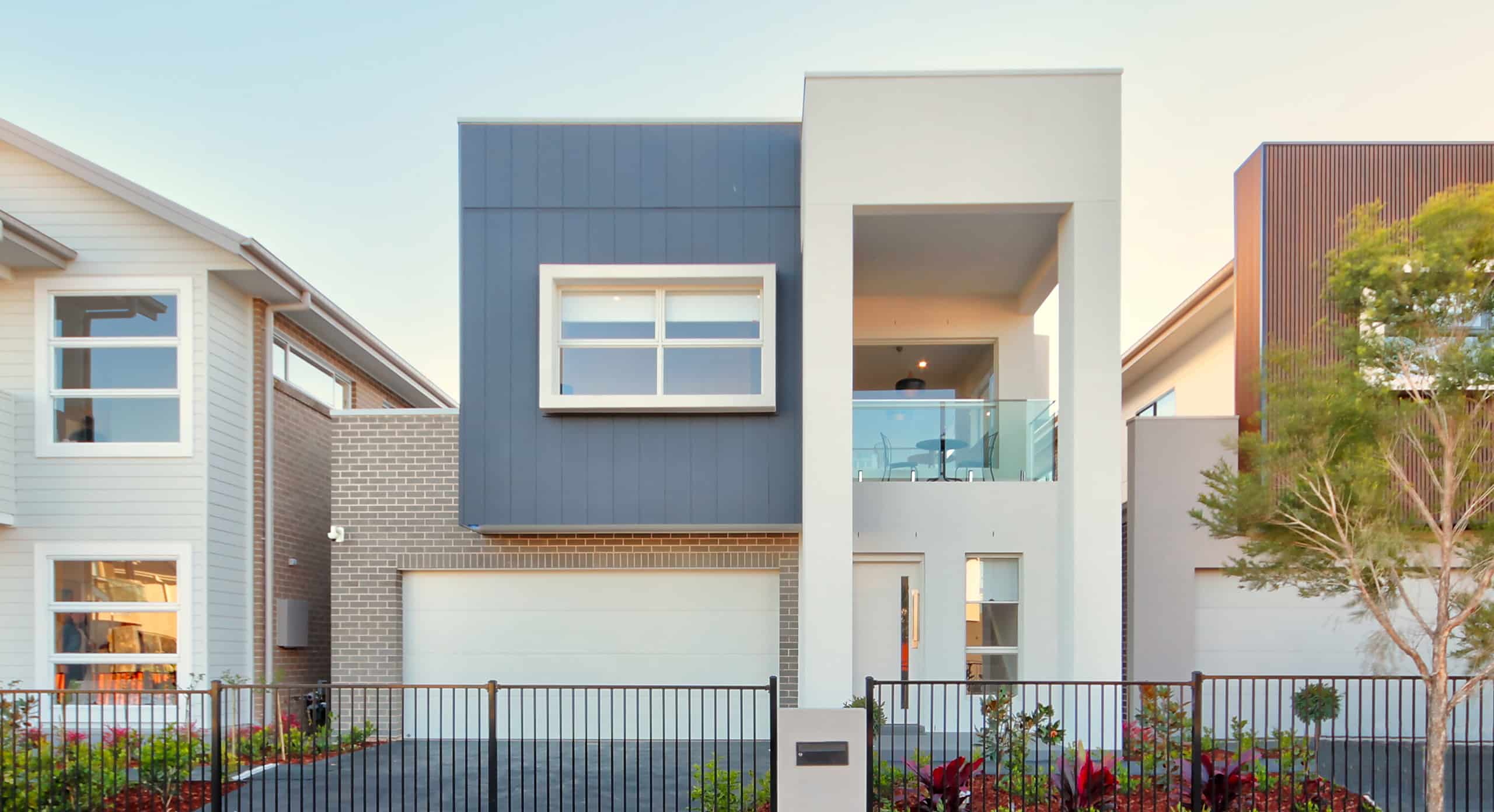
News: Why you should consider a Beechwood Homes’ Knock Down Rebuild for your dream home: Part 1
Have you considered a Knock Down Rebuild? It may be the perfect option for building your new home. But what exactly is a Knock Down Rebuild?As the name suggests, a Knock Down Rebuild involves demolishing your existing house and building a brand-new home on the cleared land. You may already be living in an area that you love, and the only thing that would make it better would be replacing your existing home with something brand new. After all, why move when you can stay in an area you know and love?A Knock Down Rebuild through Beechwood Homes can give you all of that. A brand-new home in the area you have grown to love. Our team will work closely with you to tailor a solution to your family’s needs, and the dimensions of your property.Your existing house will then be knocked down and cleared so that construction can begin as soon as possible on your brand-new Beechwood home. We have a wide range of enticing home designs to suit all types of families and home buyers.The benefits of a knock down rebuildWhether you are a downsizer, an investor, or a first home buyer, a Knock Down Rebuild could be the right fit for you. So, what are the benefits of undertaking a Knock Down Rebuild instead of buying or building a new home elsewhere? One of the major benefits is that you can remain in an area that you already know and love. If your family is growing or has grown, and all that is stopping you from fully living your dream is space, then a knock down rebuild is the perfect way to solve that problem. Another great benefit is that you will have control over the flexibility and functionality of the design. Where you may have lived around the design of your existing home, you will now be able to design your home around how you live now. And it won’t be piecemeal; all the details will be just how you want them. Where to start with your Knock Down Rebuild?So, how do you get started? The first step is finding a home builder with extensive knowledge in knock down rebuilds. With almost 40 years’ experience in building homes in NSW, we know a thing or two about Knock Down Rebuild projects. We can discuss your vision and advise you on the best way to deliver it.As a builder of choice in NSW, Beechwood Homes is well-versed in government and council building regulations and can pre-empt potential problems before they occur. This ensures your customer experience is smooth and enjoyable.To be continued…We hope that this first part of our two-part blog series on Knock Down Rebuilds has got you thinking about what you could do with a brand new Beechwood home on the block of land you currently own and love.In Part 2, we will take a closer look at what’s involved in a Knock Down Rebuild and the steps that need to be taken to have your new dream home from Beechwood Homes in the area you love. If you’re ready to take the next step, contact Beechwood Homes today to learn more about our Knock Down Rebuild process.
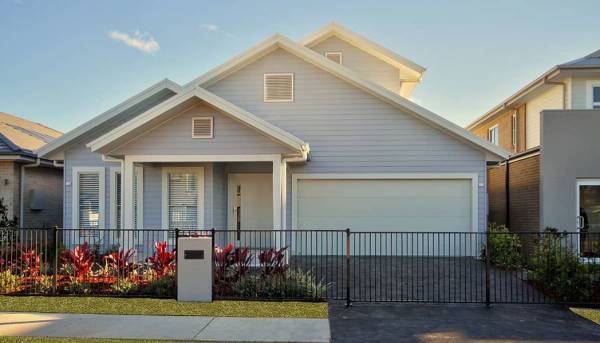
News: Why you should consider a Beechwood Homes’ Knock Down Rebuild for your dream home: Part 2
In Part 1 of this two-part series, we laid the foundations for why you should consider a Knock Down Rebuild for your new home, along with the benefits of a KDR and where to start.Now, in Part 2, let’s dive a little deeper into your Knock Down Rebuild with Beechwood Homes.The key steps to your Knock Down Rebuild After you have spoken with the team at Beechwood Homes and decided that a Knock Down Rebuild is the best way for you to achieve your perfect home,you are now ready to get started. There are four key steps to a knock down rebuild: Design.Approvals.Demolition. Rebuild.DesignHaving chosen the Knock Down Rebuild path for attaining your new home, you now need to consider the design. At Beechwood Homes, we have many innovative home designs to choose from, all of which can be tailored to meet the needs of your family. You can go inside our many single storey and double storey display homes from the comfort of your current home with our virtual tours to see which will best suit you. Approvals Many regulatory approvals need to be signed off before the physical part of a Knock Down Rebuild can commence. Following the correct processes and procedures will help your project to progress with minimal fuss.
Beechwood is happy to work with you to assist you manage the various demolition approvals that you will need to obtain. Beechwood’s assistance should keep your Knock Down Rebuild moving forward and hopefully avoid unforeseen delays or complications.Demolition Once your project has been approved and permits are in hand, then the action starts with the demolition. All of your utility services will be disconnected by your demolition contractor, and your existing home will be demolished down to its foundations. The rubble will be cleared, and the site prepared for us to commence building. Your demolition contractor will need to provide us with various certificates to allow us to commence the build of your new home.Rebuild One of the most exciting times in your life will be seeing your new home come to life. In the Rebuild stage, communication from your builder is critical. With Beechwood, not only will you have a dedicated team member who will be your primary point of contact, but you will also be given access to Beechwood’s online communication hub, Pulse Portal. As each stage of your Knock Down Rebuild is completed, your site supervisor will update you and provide images of the stages that have been completed via the Pulse Portal. Knock down the old and rebuild anew One of the hardest parts of finding a new home is facing up to the possibility that you may have to move away from the area you know and love. The area where your family has grown-up, put down roots, and built long-term relationships with your neighbours. But that doesn’t have to be your future – if you choose a builder with a proven track record in successfully delivering knock down rebuild projects. At Beechwood Homes we have been delighting customers with new homes for nearly 40 years.Experienced in knock down rebuild projects, we will work with you to ensure that you can stay in the area where you have built a life and give you the best new home in your street.Who would? Beechwood. With almost 40 years of building knowledge and experience, Beechwood will make your knock down rebuild a breeze. Call us on (02) 9765 0299 to get started, or fill out our contact form and we will be in touch.
